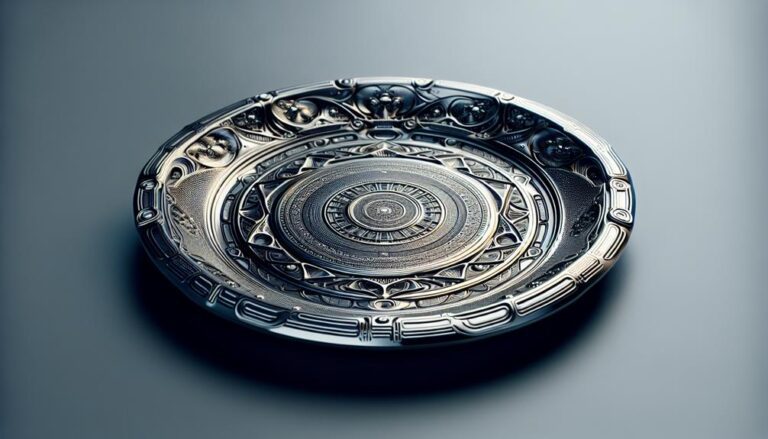Should a Fan Clutch Spin Freely When Hot Discover the Answer Today
A fan clutch should not spin freely when hot as it indicates a malfunction. A properly functioning fan clutch should engage and provide resistance when hot.
When your vehicle’s fan clutch fails to engage when hot, it may lead to engine overheating and damage. This can result in costly repairs if not addressed promptly. It is important to monitor the fan clutch’s behavior and address any issues promptly to ensure optimal engine performance and prevent potential damage.
Proper maintenance and timely repairs can help extend the lifespan of your vehicle’s cooling system and prevent costly breakdowns. Let’s explore why a fan clutch should not spin freely when hot and how to address this issue to keep your vehicle running smoothly.

Credit: www.cntraveler.com
What Is A Fan Clutch
When it comes to the efficiency of a vehicle’s cooling system, the fan clutch plays a crucial role in maintaining the optimal temperature. Understanding the function and significance of a fan clutch is essential for ensuring the proper operation of this component.
Definition
A fan clutch is a mechanical component that is responsible for regulating the operation of the cooling fan in a vehicle’s engine. It is located between the water pump and the radiator, controlling the speed of the fan based on the temperature of the engine.
Function
The primary function of the fan clutch is to control the speed of the cooling fan according to the temperature of the engine. When the engine is hot, the fan clutch engages to increase the speed of the fan, providing additional airflow to cool the radiator. Conversely, when the engine is cool, the fan clutch disengages, allowing the fan to spin more freely and reducing unnecessary energy consumption.
How Does A Fan Clutch Work
A fan clutch is an essential component of a vehicle’s cooling system that helps regulate the temperature by controlling the speed of the engine cooling fan. The fan clutch engages and disengages based on the temperature of the engine to ensure optimal cooling performance.
mechanism
The fan clutch operates through a bimetallic coil that expands and contracts with temperature changes. When it’s hot, the coil tightens, engaging the fan to spin at a faster speed, cooling the engine efficiently. When it cools down, the coil loosens, allowing the fan to spin at a slower pace or stop completely.
types
There are two main types of fan clutches: thermal and non-thermal. Thermal fan clutches use a temperature-sensitive coil, while non-thermal fan clutches rely on a separate mechanism, such as a silicone fluid, to control the fan speed.
Why Should A Fan Clutch Spin Freely When Hot
A fan clutch should spin freely when hot to ensure proper cooling of the engine. This allows the fan to disengage from the engine and rotate independently, preventing any unnecessary drag or overexertion on the engine’s components. Discover more about why a fan clutch should spin freely when hot today.
Heat Dissipation
Prevents Overheating
“` Heat Dissipation When a fan clutch spins freely when hot, it aids in heat dissipation. This means the engine can cool down more effectively, preventing overheating. Prevents Overheating A fan clutch that spins freely when hot is crucial as it prevents overheating by ensuring proper airflow to cool the engine down efficiently.Credit: www.liveabout.com
Signs Of A Malfunctioning Fan Clutch
It’s important to be able to identify the signs of a malfunctioning fan clutch in order to prevent potential engine damage and keep your vehicle running smoothly. A malfunctioning fan clutch can cause a range of issues and it’s crucial to recognize these signs early to avoid costly repairs and maintain your engine’s performance.
Loud Noise
One of the key signs of a malfunctioning fan clutch is a loud noise coming from the engine area, especially when the fan starts to engage. This could be a result of the fan clutch failing to disengage properly, leading to constant engagement and excessive noise. The loud noise is a clear indication that the fan clutch is not functioning as it should and needs to be inspected and potentially replaced.
Overheating Engine
Another tell-tale sign of a malfunctioning fan clutch is an overheating engine. When the fan clutch fails to engage, it can lead to inadequate cooling of the engine, resulting in overheating. If you notice your engine temperature rising above normal levels, it’s crucial to check the fan clutch as a potential source of the issue.
Troubleshooting And Maintenance
Troubleshooting and Maintenance is an essential part of maintaining a well-functioning vehicle. When it comes to fan clutches, understanding how to check and replace them can save you from potential engine issues. In this section, we will explore the process of troubleshooting and maintaining your fan clutch.
Checking Fan Clutch
Regularly checking your fan clutch can help identify any potential problems before they escalate. Here’s how to perform a simple fan clutch check:
- Start your vehicle and let the engine run until it reaches the operating temperature.
- Open the hood and locate the fan clutch near the radiator.
- Gently attempt to spin the fan blades by hand.
- If the fan blades spin freely when hot, it’s a sign that the fan clutch is not engaging properly.
- Alternatively, if the fan blades offer too much resistance or do not spin at all, the fan clutch may be locked up and not providing adequate cooling.
Remember, a well-functioning fan clutch should provide some resistance when hot, but not be completely locked up. If you suspect any issues, it’s recommended to have a professional mechanic look into it.
Replacing Fan Clutch
If your fan clutch is deemed faulty or it fails the check, it’s crucial to replace it to prevent potential engine overheating. Follow these steps to replace your fan clutch:
- Begin by identifying the specific type of fan clutch in your vehicle.
- Refer to the manufacturer’s guidelines or seek professional advice on the appropriate replacement fan clutch.
- Disconnect the negative terminal of the battery to ensure safety during the replacement process.
- Remove any components that obstruct access to the fan clutch, such as the fan shroud or radiator hoses.
- Use the appropriate tools to remove the fan blades and the old fan clutch assembly.
- Clean the area where the fan clutch mounts to ensure a proper fit for the new one.
- Install the new fan clutch assembly and fan blades, ensuring everything is securely tightened.
- Reconnect any components that were previously removed.
- Finally, reconnect the negative terminal of the battery and test the newly installed fan clutch to verify its functionality.
It’s important to note that fan clutch replacement can vary depending on the vehicle make and model, so consulting a professional or referring to your vehicle’s repair manual is always recommended for specific instructions.

Credit: www.amazon.com
Frequently Asked Questions Of Should A Fan Clutch Spin Freely When Hot Discover The Answer Today
Should A Fan Clutch Spin Freely When Hot Or Cold?
Yes, the fan clutch should spin freely when hot or cold to maintain proper cooling. It is a sign of good functioning.
Should I Be Able To Spin My Fan Clutch?
Yes, you should be able to spin your fan clutch easily to check for proper function.
Is A Clutch Supposed To Spin Freely?
Yes, the clutch should spin freely when not engaged, allowing the engine to run without transmitting power to the wheels.
Should A Fan Clutch Lock Up When Hot?
Yes, a fan clutch should lock up when hot to increase air circulation and cool the engine. This helps prevent overheating and maintain engine efficiency.
Why Is It Important For A Fan Clutch To Spin Freely?
It is important for a fan clutch to spin freely because it allows proper cooling of the engine by regulating the fan speed efficiently.
What Causes A Fan Clutch To Stop Spinning?
A fan clutch may stop spinning due to a faulty coil, worn out bearings, or lack of fluid pressure.
Is It Normal For A Fan Clutch To Stop Spinning When Hot?
No, it is not normal for a fan clutch to stop spinning when hot. It indicates a malfunction that needs attention.
Conclusion
The fan clutch should spin freely when hot to ensure proper engine cooling. Regular inspection and maintenance are essential to prevent overheating and potential engine damage. By understanding the function of the fan clutch, you can troubleshoot any issues and keep your vehicle running smoothly.

